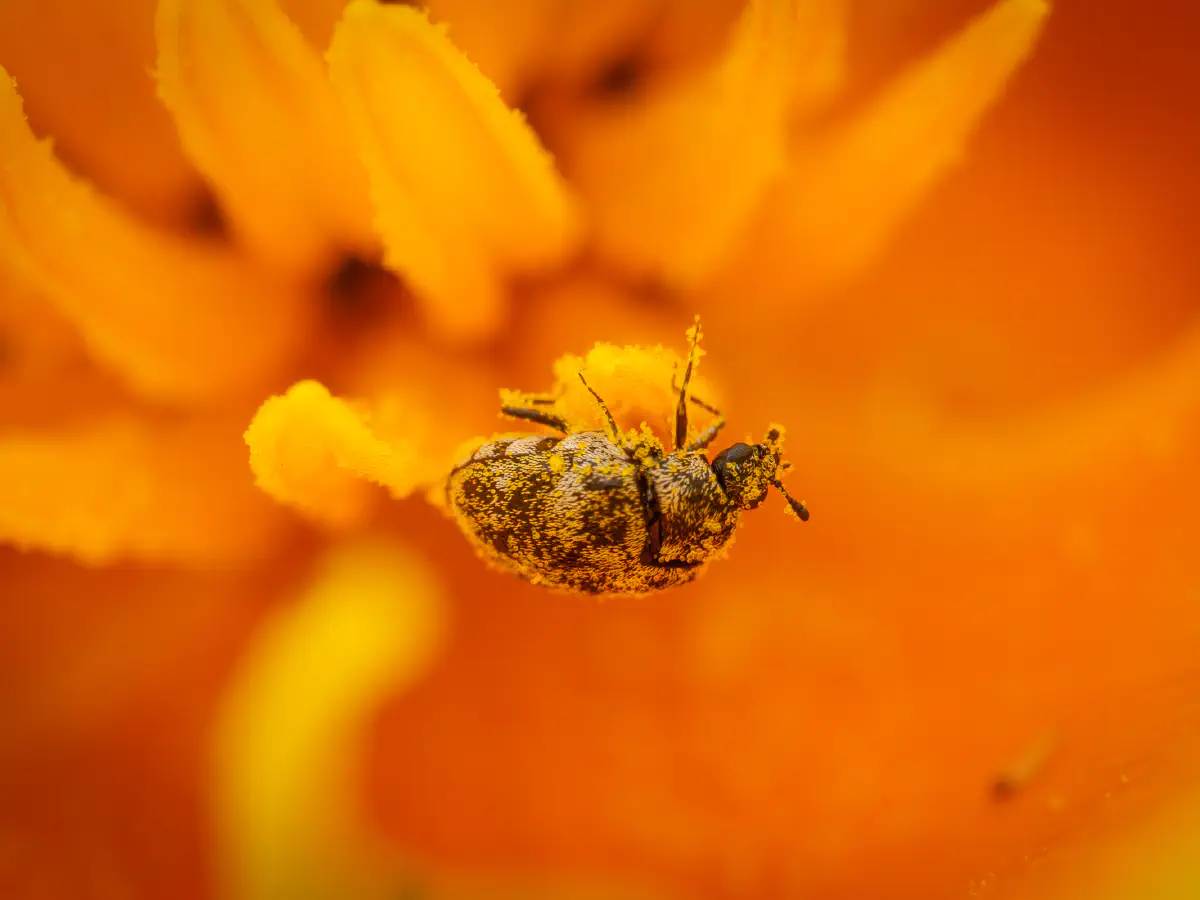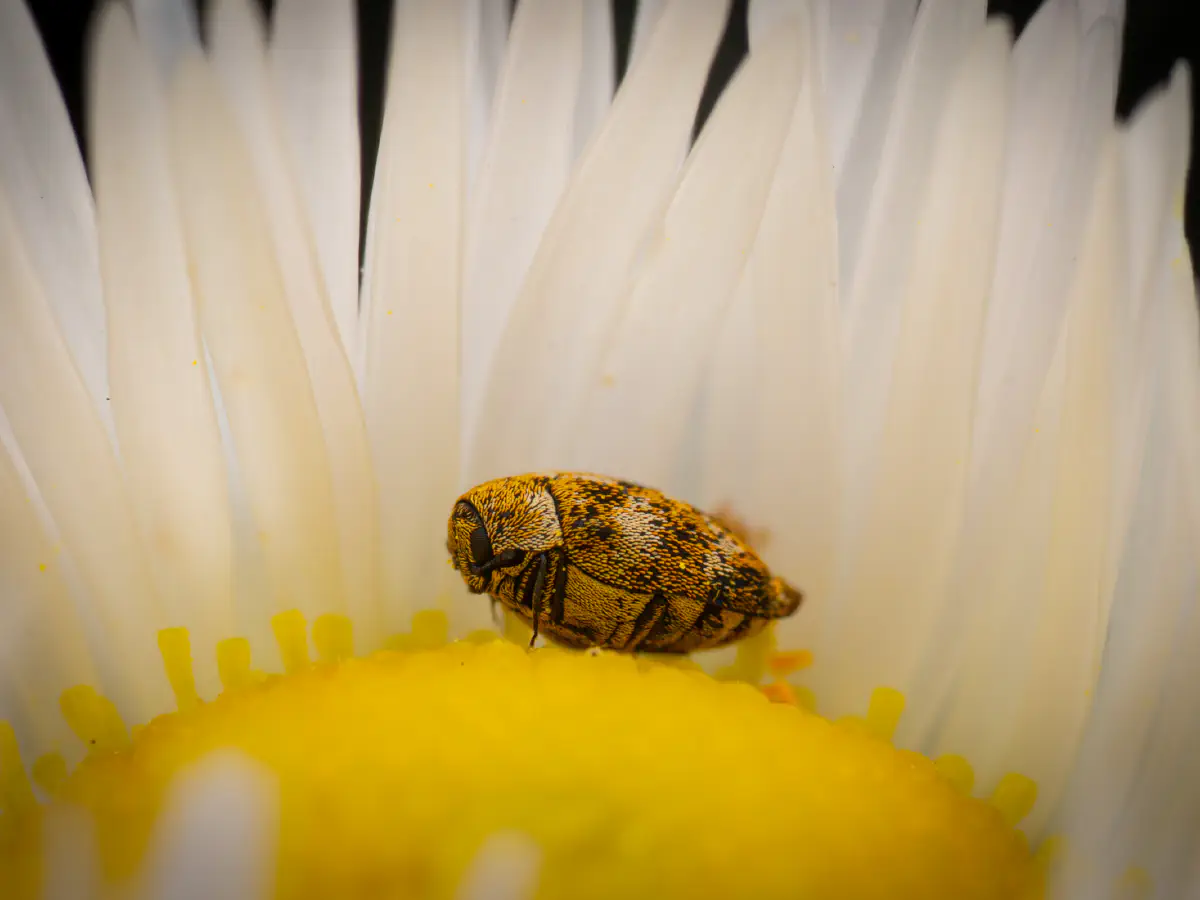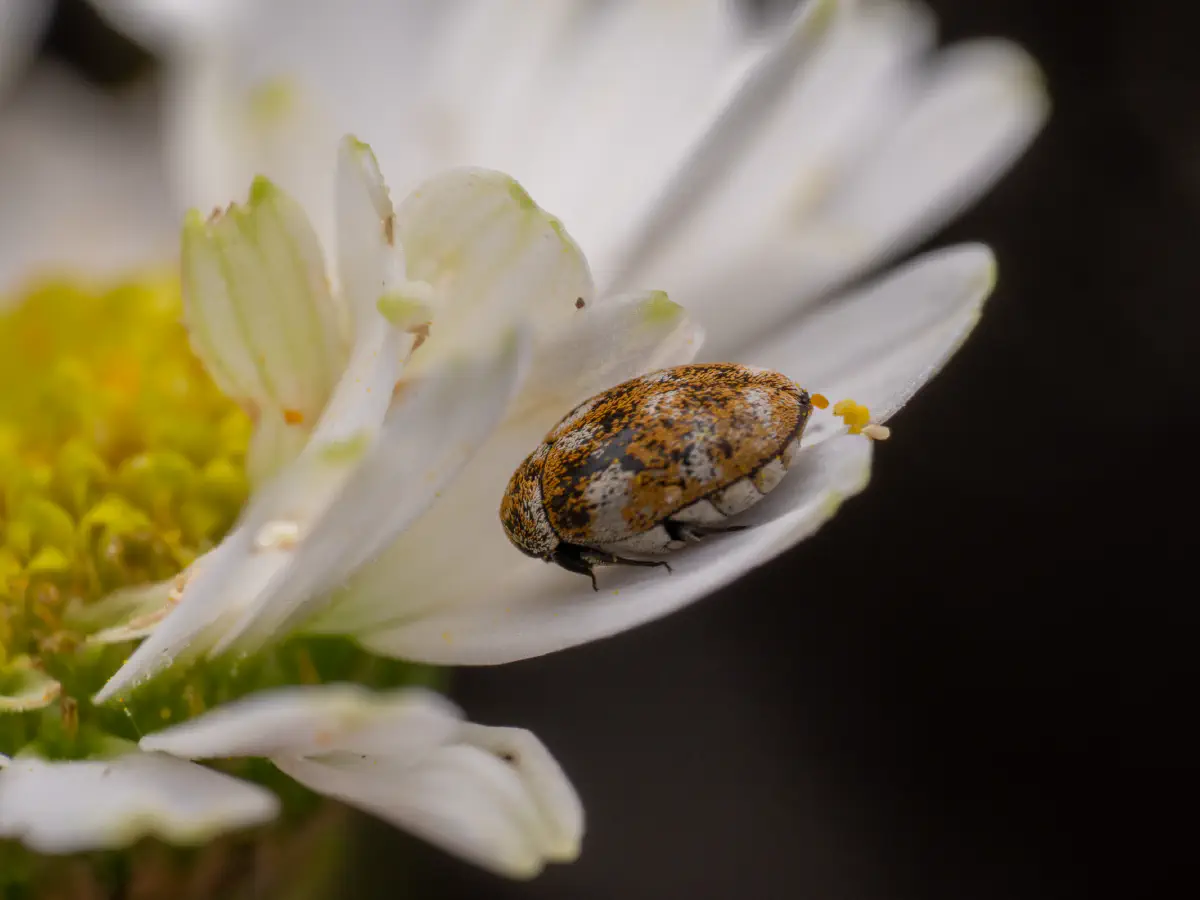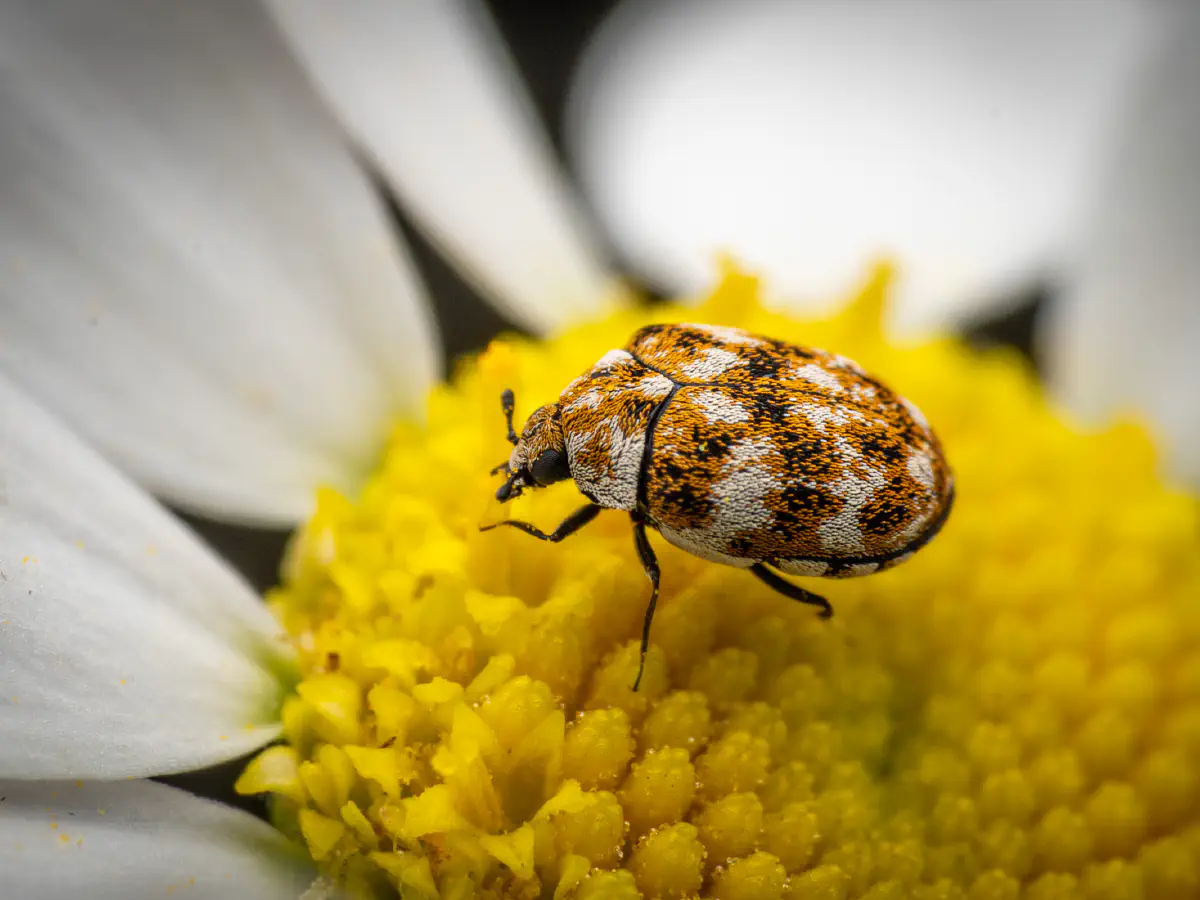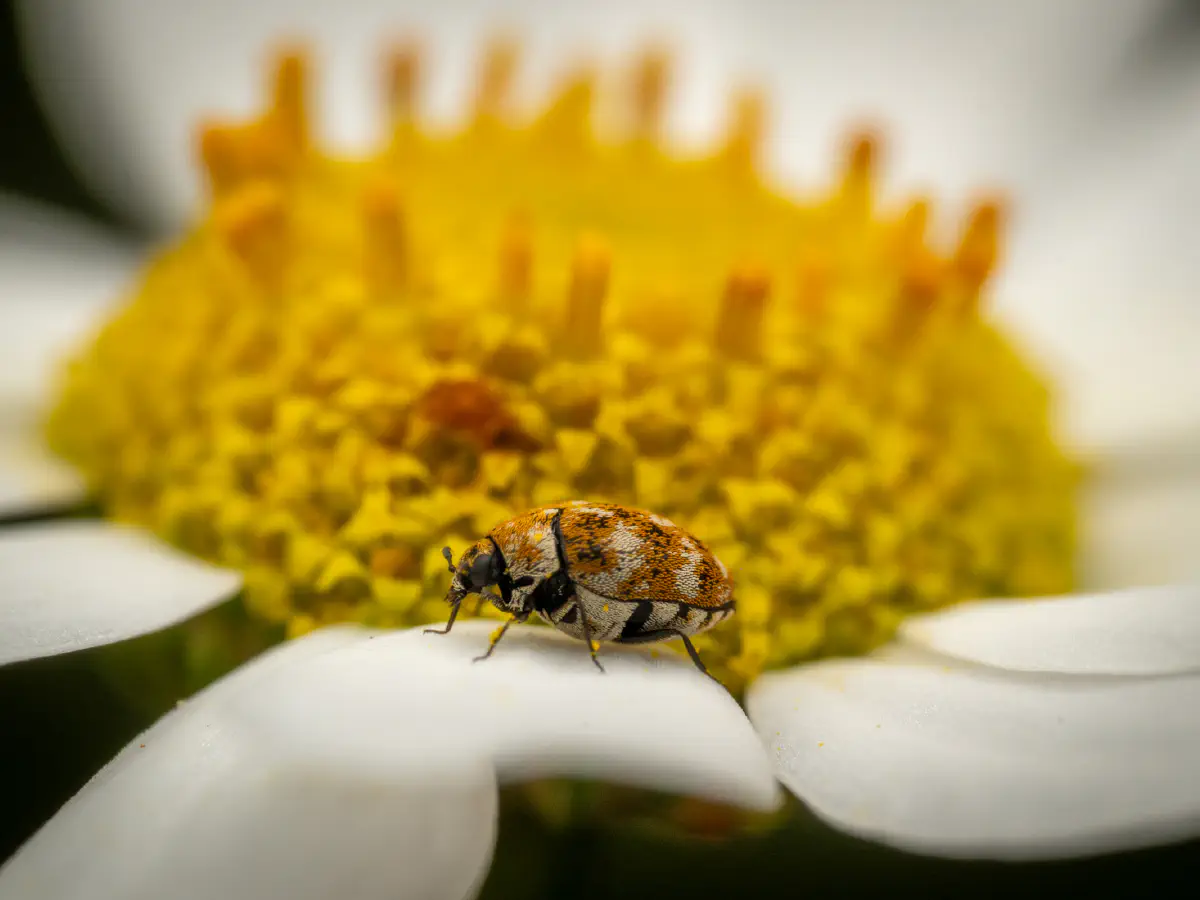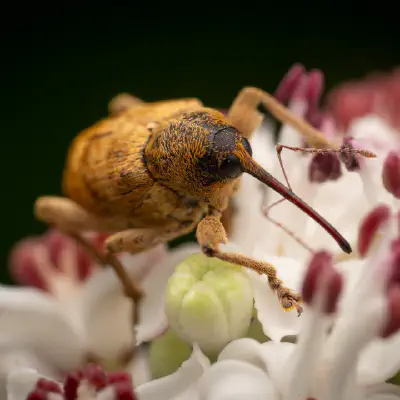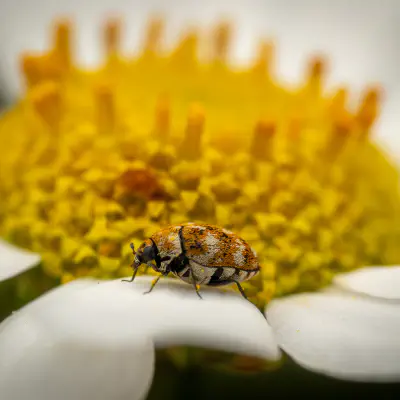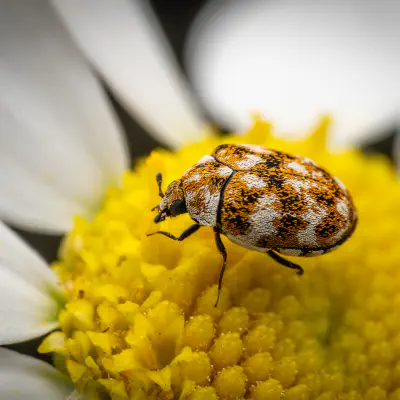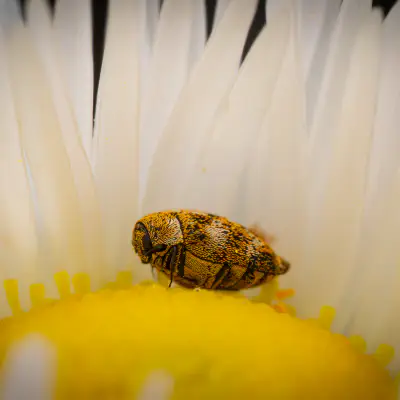The larval form of A. verbasci, commonly known as 'woolly bears' (a name shared with the larvae of Arctia caja and many other moths of the subfamily Arctiinae), measures up to 4–5 millimetres (0.16–0.20 in) in length. The larvae are elongated and densely covered in large setae (hairs). These hairs are organised into alternating, transverse groups of light and dark-brown patches: the larva appears covered in brown stripes. The body is usually wider at the
back than at the front where it also bears 3 pairs of hair tufts along its rear abdomen that can be used for self-defense.
The newly-hatched larva is 1 mm long (there are smaller ones). The body is white, somewhat transparent, but after the head the 1st, 2nd and 3rd segments are light brown, and the head is light rusty brown. The last segment is pointed with a small tuft of initially only 5 hairs at
the end of the abdomen. They are white and small. The second instar is simply thicker with a wide abdomen slightly after the middle.
The larva in the 3rd instar is already almost with the original colors of the species. Increased number of hairs on the abdominal end in a whole bundle and an orange head. The first three segments are brown. In the 4th stage, the size becomes 2.5-3 mm, the dark brown 3
segments of the last 4 become more distinct and the hairs change their color to light brown. The tuft of hairs on the last segment is now very clearly visible, and the upper hairs are pale yellowish, darkening towards the end. The head acquires its distinctive orange color for the earlier stages. In the fifth instar, the length remains 3 mm, which means that the elongation is not particularly significant, unlike in the fourth instar,
where the last stripe on the hair bundle is white, in the fifth it is dark. The three brown stripes on the upper part lighten. The head and especially the pronotum acquire a slight orange tint. The hair bundle darkens. In the sixth instar, the size is already 3.5 mm. The larva has a compact body and has grown a little in width. The head has darkened to dark orange, and the first brown segments
have darkened. The tuft of hairs is almost black. This stage is observed 6-7 days after the 5th instar. Most stages last 5 to 7 days in a controlled environment, but this varies depending on temperature and a number of conditions. Already in the 7th stage they reach 4 mm and are simply a more elongated version of the previous one. There are no new colors. Five or six days after the 6th, this one
appears. The 8th is quite stocky and wide. It is still 4 mm. Very dark. The third segment is bleached and blends in with the color of the rest of the body. The body, however, is dark brown. The two white tufts of hair at the back of the body are fading. In the 9th stage, the 4th and 5th abdominal segments acquire a brown color. The body lightens and acquires a pale yellow color.
The hairiness thickens, especially on the pronotum and the head. It, in turn, is already brown. The only think that makes a difference in the 10th stage is the abdomen, which expends significantly towards the 6th-7th segment. The two white stripes at the end of the abdomen are enlarged and darkened to yellow. In the 11th stage there are not many changes, it is simply longer than the previous one and the coloration of the
first segments is more distinct. At these stages, the colors of the larva have already formed and they simply differ in the intensity of the colors. The head looks so small because the abdomen is growing in size. The 12th instar larva is distinguished by its significantly increased number of hairs. In the 13th stage, the larva is noticeably wider and larger, and its overall darkening is noticeable. It also has a very long hair
on its back. In the 14th instar, the penultimate segment has a white stripe that is very clearly visible. The next two segments after the pronotum fade in the middle (a sign of a late stage). The 15th instar is a larger version of the previous one and the 16th is the last with the original larval colors.
